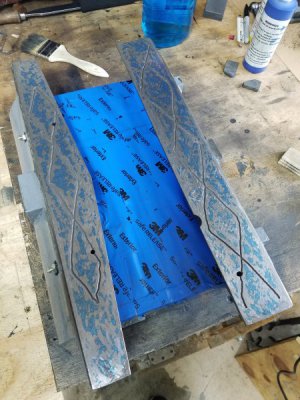Before scraping I had set the saddle on my cast iron surface plate. Setting an indicator base on the plate and moving it around I measured the top of the saddle. It was high in the middle/gib side, just like you pointed out in your last post. I flipped it over so that the top was resting on the plate, hinged the part(it was spinning on the center/gib side)and rapped each corner to verify the high center. I could hear the "click" on the lowest corner(top right of photo in my previous post). I've been scraping the high center out of it, admittedly slow and playing it cautious. It does hinge 1/3 in from the ends, now. Along the way, I have set a square on the saddle and checked square in relationship to the column. As you suggested, I will definitely scrape the middle down as you say.
I have a few questions about the table:
My CI plate is smaller than the table.
I have a camelback that is long enough, but obviously too narrow.
Do you scrape the top or bottom first? Does it matter?
I read somewhere that the tightening of work over the years usually causes bow in the top, right?
After the bottom is scraped, I'm assuming it best to then go back to scraping the top saddle dovetails to fit it to the table?
Perhaps I'm over thinking this but, I want to have a way to verify my work beyond the camelback and I need to verify parallelism of the top to bottom of the table. Would it be acceptable to set some 123 blocks on the CI plate and then place the table on the blocks to check top to bottom parallelism with an indicator? Maybe that makes no sense and is a dumb idea. Again, I just want to have a way to verify my work and right now I have a mental block at on this one.

